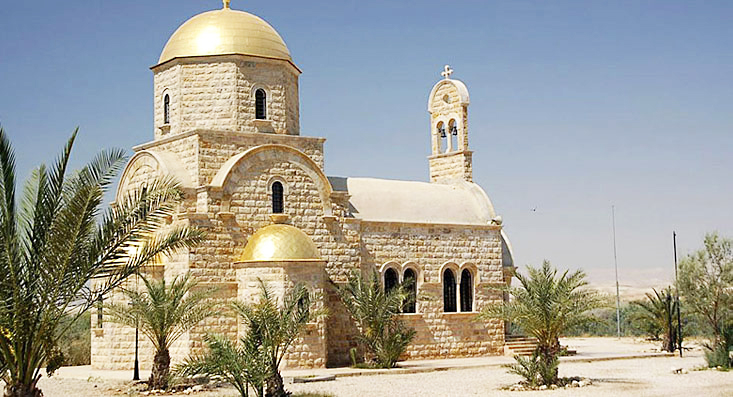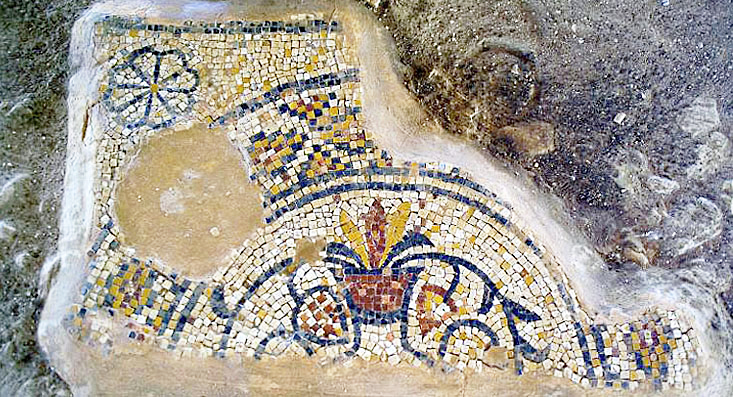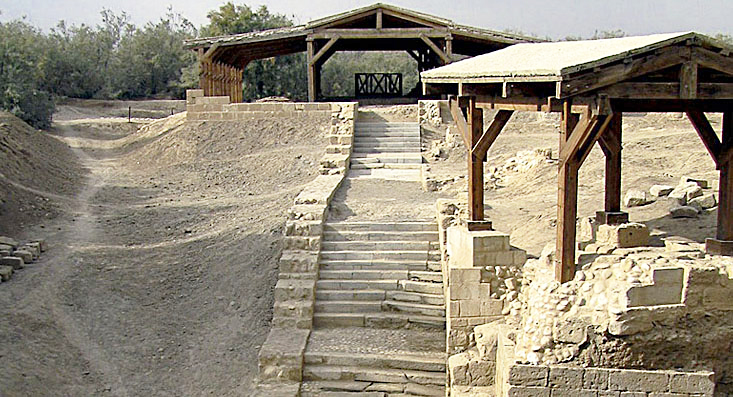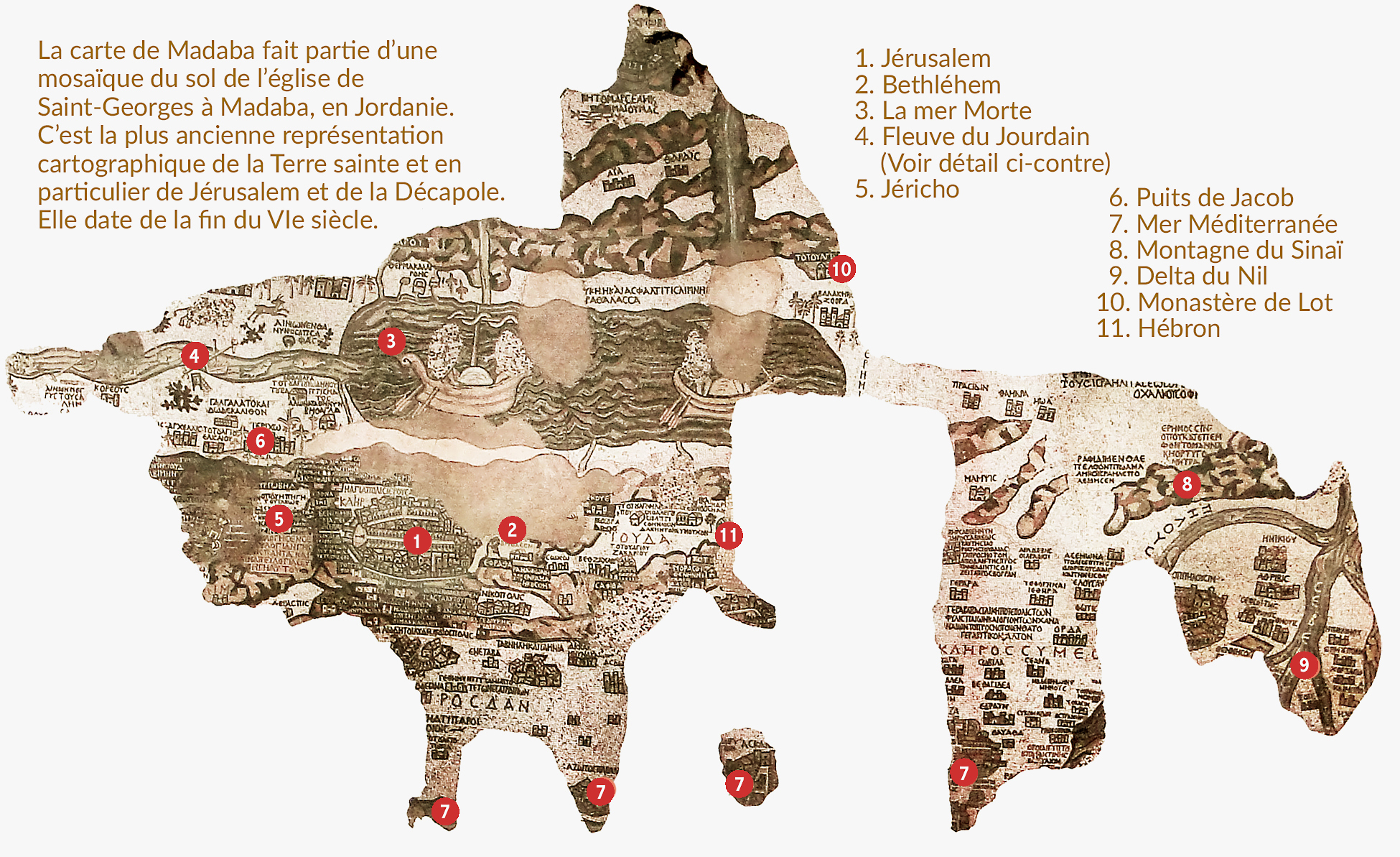
Bible, History, Archaeology
Bible,
History,
Archaeology
Wadi Kharrar,
where Jesus of Nazareth was baptized?
Introduction
A few kilometers north of the Dead Sea, the waters of the Jordan River have long attracted Christians, as John the Baptist is said to have baptized Jesus of Nazareth here. Archaeological excavations have revealed traces of a significant early Christian presence, providing a clearer picture of the setting of the biblical story.
The Jordan River, whose flow is now reduced by economic activity, still flows north-south from Mount Hermon to the Dead Sea. Nine kilometers north of the Dead Sea, on the river's western bank, an elegant little Orthodox church called Qasr el Yehud stands a few meters from the watercourse that forms the border between Israel and Jordan.
Directly opposite Qasr el Yehud, a stream flows from the Jordanian plateau into the Jordan River: the Wadi Kharrar. At its eastern end, it flows into the plateau, dominated by a natural promontory, Tell Mar Elias.
Qasr el Yehud, a Greek Orthodox church near the Jordan River, which marks the border between Israel and Jordan. © Doron Nissim.
Historical archives

Image opposite: Qasr el Yehud, a Greek Orthodox church a few meters from the Jordan River © Doron Nissim.
Several non-biblical texts from late antiquity nevertheless describe the supposed location of Jesus Christ's baptism. They point to a specific location in the Jordan Valley, and provide a few topographical details. In 333, an anonymous pilgrim from Bordeaux reported that Jesus had been baptized 5 miles (7.5 km) north of the Dead Sea, a distance that effectively places the site at the latitude of Qasr el Yehud. Another witness, Archdeacon Theodosius of Alexandria (530), states that a church of St. John the Baptist was built there, raised on pillars and arcades, and further asserted that a marble column surmounted by a cross marked the precise point of the baptism.
 Image opposite: the ruins of a basilica (detail) near the Jordan River. It was later rebuilt on pillars and arches. Sumit Lalchandani.
Image opposite: the ruins of a basilica (detail) near the Jordan River. It was later rebuilt on pillars and arches. Sumit Lalchandani.
In 570, the Italian pilgrim Anthony of Piacenza reported that the site was directly opposite a monastery of St. John, and that a stone stairway led down to the river to the site of the event.
More recently, in 1899, Father Jean-Louis Féderlin visited Wadi Kharrar and spotted several ruined churches. It was in 1995 that the Kingdom of Jordan decided to set up an excavation program, and entrusted archaeologist Mohammed Waheeb of the Jordanian Antiquities Service with its management.
The «real» place of baptism?

Image opposite: the ruins of a basilica near the Jordan River. It was later rebuilt on pillars and arches. Sumit Lalchandani.
Behind the basilica's apse, a majestic marble staircase was unearthed, leading down to the ancient riverbed. At the foot of the staircase, a second chapel of modest size was engraved with numerous cross-shaped graffiti. Again according to ancient authors, one of these chapels would have marked the point where Jesus laid down his clothes, and the other the place where the immersion rite was performed. These remarkable correspondences give strong grounds for identifying the site of Jesus Christ's baptism.
The Mar Elias tell

Image opposite: a view of the ruins of the Byzantine basilica. Sumit Lalchandani.
A low stone wall surrounded the ruins of a complex including three large basins, the remains of three Byzantine churches and a series of canals. This was certainly an early Christian sanctuary, curiously equipped with a water supply system. A long aqueduct fed the three round stone basins. The importance given to water made us think of baptismal fonts, an idea consistent with the memory of John the Baptist. It was therefore assumed that these basins were baptismal pools adapted to accommodate large numbers of pilgrims.

Image opposite: in the ruins of the Byzantine basilica, a mosaic depicting a splendid bouquet of flowers in a vase © Sumit Lalchandani.
The second church was built around a cavity in the rock that served as the apse. A transverse partition separated the apse from the nave. In fact, several ancient authors speak of a church built around the grotto where St. John the Baptist is said to have resided: it is therefore possible that St. John the Baptist slept in this shelter.
A third church, apparently built with semicircular arches, was christened the «Church of John Paul II» following the Pope's visit in 2000, when he celebrated mass here on the occasion of the Great Jubilee of Christians.
All the remains on the summit of the Mar Elias tell have been dated on the basis of clues found in the field. Occupation of the mound ranges from the 2nd century BC to the 6th-7th century AD, prompting researchers to identify it with the Bethany-beyond-the-Jordan of the Gospels.
Other remains
All along the wadi, numerous remains were found, scattered at several points. At the mouth of the narrow part of the wadi, a vast oval-shaped basin was connected to supply and drainage channels. Its age was determined by Roman, Byzantine and Islamic pottery found all around. A few meters above it stood a building that may have served as a guesthouse for pilgrims.
Upstream from the Church of St. John the Baptist, a spring flows over a bed of stones. It may correspond to the one described in 570 by the pilgrim Anthony of Piacenza: "In this part of the Jordan is the spring where Saint John baptized, and which is two miles from the Jordan (...). The whole valley is occupied by hermits.
From the spring, a path leads north to a rock face, which shelters two caves that have been converted into rock dwellings. One of these caves may be associated with an astonishing 7th-century story of a pilgrim-monk suffering from a high fever who took refuge in a natural shelter. He then had a vision of Saint John the Baptist telling him: «This little cave is bigger than Mount Sinai, for our Lord Jesus Christ himself visited me here». The monk immediately recovered from his fever and moved into the cave, which he converted into a cave church.
The entire site was excavated between 1996 and 2002, uncovering some ten churches, five baptismal pools and five eremitical cells, not to mention ancillary buildings. Wadi Kharrar appears to have been much frequented by Christians in Byzantine times, but was gradually abandoned in the Middle Ages. Pilgrims then retreated to the west bank, which explains the founding of the Greek monastery known as Qasr el Yehud.
Finally, for the sake of completeness, let's mention a story with legendary overtones. Not far from the baptism site, a path leads to the remains of a two-room building that excavators have associated with a fifth-century figure, Saint Mary the Egyptian. A native of Alexandria, Mary is said to have converted to Christianity while visiting Jerusalem, then retired to the Jordanian desert (see map above). She died in the presence of the monk Zozime, who dug her grave with the help of a lion! The region was certainly long inhabited by wild animals, including lions...
Wadi Kharrar, the Jordanian site of Jesus' baptism, was classified as a World Heritage Site by UNESCO on July 5, 2015.
Wulfran Barthélemy


 Image opposite: the ruins of a basilica (detail) near the Jordan River. It was later rebuilt on pillars and arches. Sumit Lalchandani.
Image opposite: the ruins of a basilica (detail) near the Jordan River. It was later rebuilt on pillars and arches. Sumit Lalchandani.
